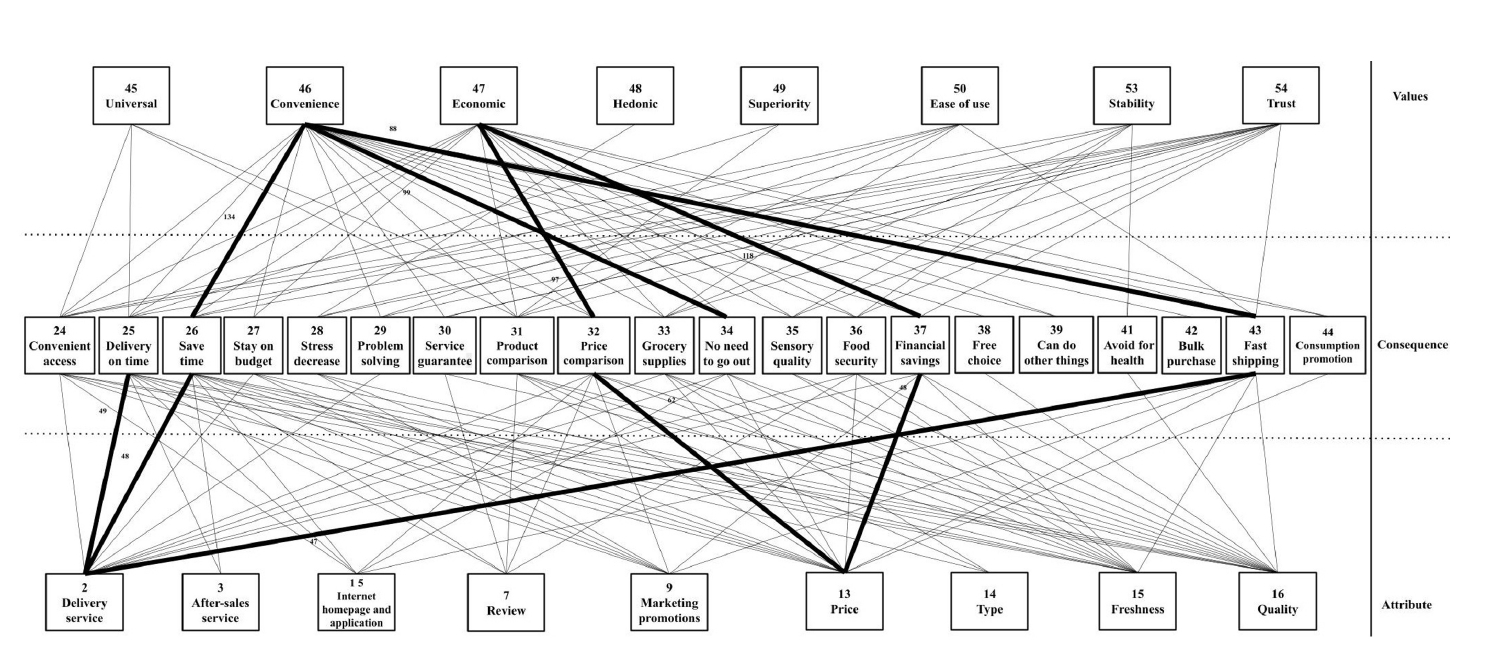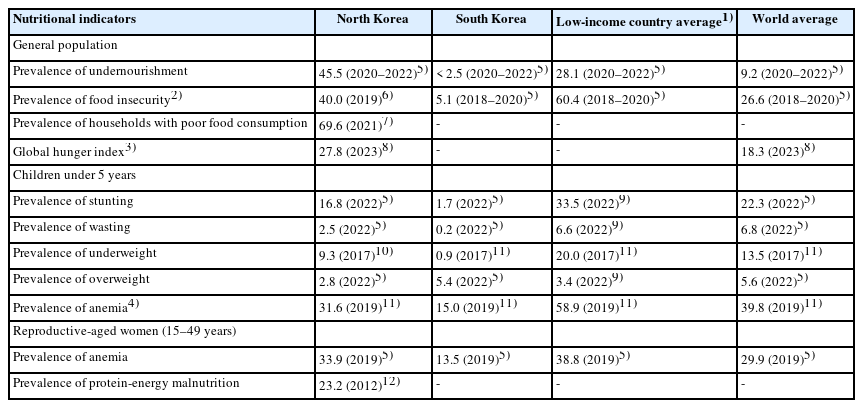Search
- Page Path
- HOME > Search
Research Articles
- [English]
- Exploring the customer perceived value of online grocery shopping: a cross-sectional study of Korean and Chinese consumers using Means-End Chain theory
- Xinyu Jiang, Hyo Bin Im, Min A Lee
- Korean J Community Nutr 2024;29(4):318-335. Published online August 31, 2024
- DOI: https://doi.org/10.5720/kjcn.2024.00007

-
 Abstract
Abstract
 PDF
PDF - Objectives
Despite the growing market share of online grocery shopping, there is a need to understand customer perceived value due to the ongoing advancements in information technology. This study explores the connections between attributes, consequences, and values. Additionally, it conducts a cross-country comparison of consumers’ online grocery shopping behaviors to gain a deeper understanding of consumer market segments and any potential variations among them.
Methods
Data was collected through an online questionnaire survey conducted from May 1 to 15, 2024, targeting 400 consumers in Seoul, Korea, and Shanghai, China, who have experience with online grocery shopping. The survey utilized the Means-End Chain theory and association pattern technique hard laddering. Data collation and analysis were conducted using the IBM SPSS Statistics 28.0 program. The LadderUX software was employed to analyze the links between attributes, consequences, and values and create the consumer purchasing process’s implication matrix and hierarchical value map (HVM).
Results
The study identified key attributes that influence online grocery shopping decisions, including delivery service, price, freshness, and quality. Korean consumers demonstrated a higher sensitivity to price (19.0%) and delivery service (17.0%). In contrast, Chinese consumers prioritized delivery service (15.0%) and after-sales service (14.8%). Commonly cited consequences included time saving (12.6% for Koreans, 11.3% for Chinese), whereas prevalent values encompassed convenience (36.8% for Koreans, 19.6% for Chinese) and economic value (26.6% for Koreans, 14.7% for Chinese). The HVM underscored these insights, highlighting diverse consumer preferences and country-specific nuances.
Conclusions
The findings highlight the current state of online food consumption and consumers’ value systems, revealing variations among countries. These findings offer empirical insights that can be used to create customized global marketing strategies that resonate with various consumer preferences and market dynamics. -
Citations
Citations to this article as recorded by- Beyond the stage: how performing arts tourism shapes tourist perceptions and destination image
Islam Elbayoumi Salem, Mohammed Ali Bait Ali Sulaiman, Enrico di Bella, Sara Preti, Mohamed Kamal Abdien, Ahmed Magdy
Journal of Hospitality and Tourism Insights.2025; : 1. CrossRef
- Beyond the stage: how performing arts tourism shapes tourist perceptions and destination image
- 5,667 View
- 75 Download
- 1 Crossref

- [Korean]
- Nutritional status of North Koreans and related perceptions among South Korean adults
- Youngmin Nam, Jihyun Yoon
- Korean J Community Nutr 2024;29(4):288-303. Published online August 31, 2024
- DOI: https://doi.org/10.5720/kjcn.2024.00006

-
 Abstract
Abstract
 PDF
PDF - Objectives
North Koreans have been facing chronic food shortages and malnutrition. This study examined the nutritional status of North Koreans and the perceptions of South Korean adults regarding their nutritional status.
Methods
The nutritional status was examined using nutritional indicators for the general population, children, and reproductive-aged women in North Korea. An online survey was conducted among 1,000 South Korean adults aged 19–69 years to investigate their perceptions regarding the nutritional status of North Koreans.
Results
Although the nutritional status of children in North Korea has consistently improved, significant progress in the general population and reproductive-aged women in the country remains elusive. The prevalence of malnutrition among North Korean children has decreased to a level that is not considered severe based on international standards, although it shows a substantial difference from that among South Korean children. The prevalence of undernourishment and food insecurity in North Korea remains over 40%. South Korean adults perceive the nutritional status of North Koreans as being more severe than it is in reality. Notably, a significant inconsistency exists between the perceived and actual nutritional status of North Korean children, with over 95% of South Korean adults perceiving North Korean children’s malnutrition as being more severe than it actually is. Moreover, South Korean adults in their 20s to 40s tended to perceive the nutritional status of North Koreans as being more severe than those in their 50s to 60s did.
Conclusions
The nutritional status of North Koreans is a matter of concern. The disparity between South Koreans’ perceptions of the nutritional status of North Koreans and the actual status highlights the need for accurate information dissemination to effectively address malnutrition in North Korea. These efforts could be instrumental in enhancing public awareness and fostering social consensus on food aid and nutritional support programs for North Korea.
- 3,854 View
- 72 Download


 KSCN
KSCN

 First
First Prev
Prev



